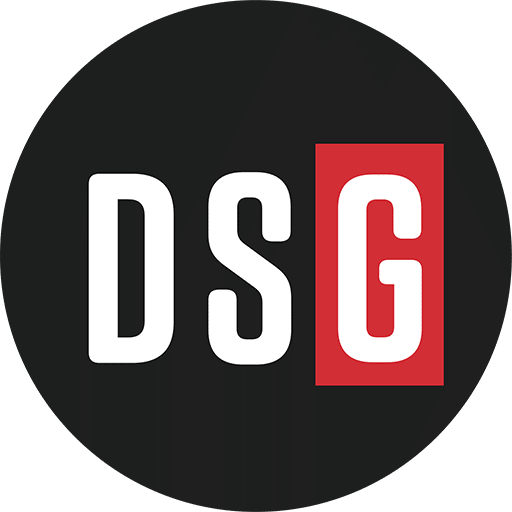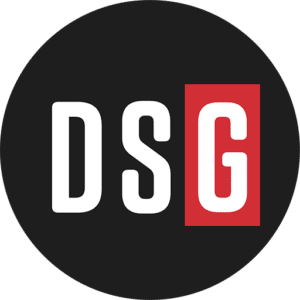Pricing is a powerful lever. We spoke with two pricing experts to shed some light on the best approaches to pricing for profit maximization:
- Scott Sinning, Founder, Pricing for Distributors, and former Vice President of Pricing Strategy, Graybar
- Brian Hopkins, Chief Customer Officer, Distribution Strategy Group, and former executive roles at Grainger, HD Supply, Hisco, Redi Carpet and AZP Multifamily
How can distributors balance market pressures and competitive positioning? How can the right data drive better decision-making? How can you align pricing with your business goals?
Missed the webinar? Watch it on-demand.
Deconstructing Your Pricing Strategy: What You Need to Know
Sinning suggested distributors find their North Star, asking what the company’s strategic sales and growth goals are. Once these are defined, seek alignment.
“I view pricing strategy as derived from a broader view of the company and its mission, purpose and values,” Sinning said. “Once you have that aligned, it’s process, technology and people. My belief, after 30 years in the business, is despite all the technology, data and AI, fundamentally it’s a people business. If you don’t change the hearts and minds of your inside folks and your frontline sales team, it’s going to be a tough road.”
Hopkins also believes it’s a human game. “It’s the people who do the work of selling,” he said. “You have to listen to the voices of the people who execute sales. Get them in the room at the beginning of the strategy process.”
Sinning said it’s critical to have “the people in those roles that know and care about the business.” These key players can “drive change by communicating to their fellow associates why throwing cost plus their favorite markup number on an order” should no longer apply.
Who (Really) Owns Pricing?
Who owns pricing in your organization? Some distribution companies have vice presidents of pricing, while others have an analytics team. Still others place pricing complexities at the feet of their marketing team or even with sales executives.
Sinning suggested control over pricing should stay “where the passion, the expertise and the support would reside to drive change … that change agent at the executive level.” These center-led organizations can support small pricing departments. However, pricing isn’t created in a vacuum. The best pricing teams are “a collaborative function where the pricing leader works with sales leadership on system price guidance.”
Price setting should be “driven from data through an analytical function versus a gut function,” Sinning said. Above all, “it should not be designed in a silo.” Pricing should be viewed as more guidance than prescription, and then it’s up to leaders to meet their goals using the support coming from the pricing team.
“I think that’s one of the reasons we have different voices at the table when you start at the strategy level,” Hopkins said. “So, everybody is on the same page.” The job of the pricing team behind the scenes is to give the facts and provide the data so the organization isn’t going by the gut but are instead using market- and customer-level data for pricing decisions.
No Single Solution
A one-size-fits-all pricing strategy won’t work. “When thinking about your strategy, you must think about what book of business you’re trying to move with a pricing initiative,” Sinning said. “For most distributors, there’s a standard mix of stock and flow of day-to-day SKUs. They have rich price history data for customers in specific geographies. That’s a sweet spot for low-hanging fruit.”
The business may also have larger, project-centric customized pricing that requires negotiation by an experienced sales rep. “It’s not to say that that’s a book of business you should ignore, but there might be a different approach for how to train sales reps to negotiate value for bundled services for different things that might be part of a large project versus day-to-day orders that are coming through the warehouse,” Sinning said.
Finally, there could be a different strategy for contractual pricing, another unique animal in a distributor’s portfolio. The trick is to manage contractual pricing to comply with what you’ve agreed to and remain aware of market factors that could change the contracted price. Inflationary pressures, competitor encroachments and even the ups and downs of supply and demand create renegotiation opportunities that pricing teams can leverage.
Sinning stressed: “You don’t want a black-box model.” Pricing strategies should fluctuate with market conditions. “Don’t have your analytics sitting there on a spreadsheet, then send sales into the field saying, ‘Here’s what we think your prices should be,’ without explaining why you think it’s the best way to approach it.” Pricing structures and processes should be as agile as possible. Keep open lines of communication and transparency between price-setters and the on-the-ground sales team.
“When I think about pricing deployment, my continuous improvement mindset goes into gear,” Hopkins said. “It says, ‘You’ve got the strategy aligned with what you want to do, but that next layer down is how do you teach the leaders about what you’re trying to do and why you’re trying to do it?” He suggested an ebb and flow to information between the sales and pricing teams so, “it feels more transparent to them versus corporate says, ‘we’ve got to go to this price level and that’s the end of it.’”
Change Management
But as we all know, some organizations will experience resistance. It’s not uncommon for the field sales teams to own pricing, in addition to customer relationships. Evolving toward professional and more centralized pricing management can create change management issues that must be resolved to be successful.
Hopkins experienced this firsthand. “What really made the difference is the mid-level manager got involved with what was happening,” he said. “They were the resources that the sales team had gone to for pricing support. And they would collaborate.” Once the mid-level managers understood how pricing was set, they provided the support that brought their sales team on board. It wasn’t overnight, but in about 18 months, everyone came to accept the new way.
Sinning said that every organization will have early adopters who get it and are on board from day one. “You’re going to have other folks that say, ‘No, I don’t want to do it. I don’t want to change. Stay out of my business.’” He stressed communicating the why behind the curtain will help overcome reluctance.
One “why” is the significant time savings after moving pricing away from a sales team. “Sales professionals spend a lot of time building their own logic, matrixes, spreadsheets and formulas. I think sales teams want modernization of the pricing environment within their companies because it saves them time and makes them more money. If it’s done well, they’re more than happy to turn over the reins.”
This scenario is good news for any distributor who ever had a customer charged different prices for the same item. The right pricing processes ensure consistency, freeing the sales team to do what they do best — close deals.
Getting Competitive with Pricing Intelligence
Competitor information on pricing is as valuable as it is challenging to capture. Marketing teams often manually scrape the web to get this data. Typically, the data may not include various discounts or strategies distributors employ to remain competitive, however. Hopkins called it “a way to bring that data into the organization where it didn’t exist before. So that gives you a baseline for where you need to be.”
Sinning said it is hard to know where competitive pricing is in distribution, partly because the price is only a part of the typical value proposition that might include “freight terms, payment terms, backend deals and other things where the list price isn’t the price at all.”
Instead, he suggested, “a methodical data-driven way for distributors to know the market is to look at historical transactions out of the ERP, billing histories, sell prices and margins and use that as a proxy for the market. Because if you’re selling it today for whatever it is, you’ve hit the market price; otherwise, the customer wouldn’t have bought it from you, or at least you’re close enough. So, you can use that price history to indicate where the market is and where you should be for certain product segments.”
How Do Services Play into Pricing?
Traditionally, services have been a part of the sales price, or the customer leverages a service as part of a project negotiation. Charging for add-on services is challenging to navigate. “I think that’s a new frontier for most distributors,” Sinning said.
But the key, he suggested, was to “train your sales force on the negotiation tactics of a buyer, as well as how to communicate the value you’re providing with those services, and then be disciplined with how that’s communicated and sold to the customer so that they see the value of what it saves them in labor and safety issues and extra work on the job site.”
Distributors can offer significant value-adds, but the sales team must understand and communicate these.
Sinning said the next phase of sophistication after systematizing stock goods pricing is addressing the “bundled services aspect of project business that has value to the customer, but maybe has been undersold by distributors as real value. The better you can get at that, the more price realization you’ll get.”
The Role of AI in Pricing
Pricing software historically has relied on the rearview mirror. AI can look at these historical patterns but also offer predictive analytics on what the market may do.
“We’re slowly dipping our toes in the water of AI and trying to use that to predict the future,” Hopkins said. “Some vendors out there do it, but I urge caution around jumping into the vendor pool right out of the gate without the strategy and change management in place. I think AI is another example of that, that there’s a lot of positive flow it can give us, but we’ve got to be very careful on how we implement it.”
Sinning said AI is a journey. “If a distributor is using spreadsheets and manual processes to do pricing today, saying that they’re going to go from there to climbing Mount Everest is probably not realistic. It probably depends on where you are now and how sophisticated you are around data and systems to make the most of what AI could deliver.”
Yet AI is, in many ways, perfect for the SKU-laden intensity of a distribution pricing model.
Sinning said AI could enhance trusted customer relationships when it comes to pricing – given the important role pricing places in the customer experience. “Distributors do well and succeed over time based on repeat business. Repeat business is based on trust and loyalty because the customers feel they’re getting a fair price, and it’s fast, frictionless and easy to do business.
“There are times to optimize pricing levels based on supply and demand with the caveat that you still want to be fair because, at some point, the customer will know if they paid too much and you took advantage of them. If you consistently deliver a fair price across your customers and products, that will give you the margin lift that every distributor wants to see.”
Want to learn more? Check out the on-demand webinar to see what you missed.


